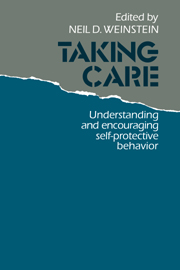I - Theoretical perspectives
Published online by Cambridge University Press: 03 February 2010
Summary
There is no single starting point in prevention, for any significant hazard involves an impressive number of actors and issues. To reduce flood losses, for example, we must consider the meteorologist's accuracy in predicting storms, the engineer's ability to construct flood works, the city council's success in discouraging construction on the flood plain, the civil defense warning and rescue system, and the government's willingness to pay for all of these. We must not overlook the mass media's depiction of the flood threat, not just during an emergency but at all other times. Finally, we cannot ignore the flood plain occupants, those who could lose their lives and property, and must ask whether they have purchased insurance, floodproofed their homes, and devised evacuation plans or whether they even realize that the flood warnings apply to them.
Because the focus of this book is on protective behavior – actions individuals can take to reduce their vulnerability to harm – our focus here would be on the responses of the flood plain dwellers. Yet even with this restriction, there are many perspectives to consider. Each behavioral scientist tends to emphasize a different aspect of human nature: cognitive processes, emotions, social interaction, history, and others. No one of these perspectives is sufficient to explain how people react to hazards. The greater our awareness of these different facets of human nature, the better will be our understanding of the adaptive and sometimes maladaptive behaviors we see.
- Type
- Chapter
- Information
- Taking CareUnderstanding and Encouraging Self-Protective Behavior, pp. 11 - 13Publisher: Cambridge University PressPrint publication year: 1987



